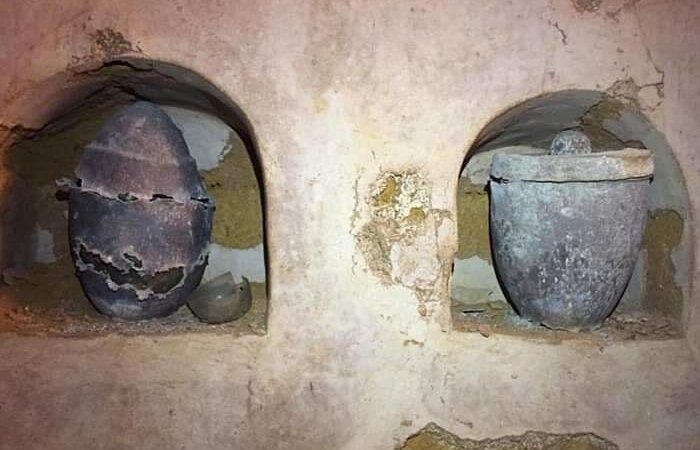Jan Bartek – AncientPages.com – Scientists have identified, for the first time, the composition of a Roman perfume more than 2,000 years old thanks to the discovery of a small vessel of ointment in Carmona.
Two thousand years ago, in the Roman city of Carmo (today’s Carmona), in the province of Seville, someone placed a vessel of ointment in a funerary urn. Twenty centuries later, the FQM346 research team at the University of Cordoba, led by Professor of Organic Chemistry José Rafael Ruiz Arrebola, in collaboration with the City of Carmona, has been able to chemically describe the components of a perfume dating from the first century AD.

Place where the ointment where found. Credit: University of Córdoba
The residue of the perfume, discovered in 2019 during an archaeological intervention in a mausoleum found during construction of a house on the Calle Sevillat, had been preserved, solidified, inside a vessel carved in quartz, which was still perfectly sealed. As Román explains, it was a collective tomb, possibly belonging to an affluent family, and in which, in addition to numerous objects related to funeral rituals (offerings and trousseaus), the cinerary urns of six adult individuals—three women and three men—were found.
In one of the urns, made of glᴀss, over the cremated skeletal remains of the deceased (in this case, a woman between 30 and 40 years old), a cloth bag had been placed (the remains of it having been preserved). It contained three amber beads and a small rock crystal (hyaline quartz) flask, carved in the shape of an amphora, containing ointment.
Perfume containers used to be made of blown glᴀss, and on very rare occasions, examples made of this material have been found. Their characteristics, difficult carving, and hardness made them very valuable and extremely expensive. In addition to the uniqueness of the receptacle, the truly extraordinary aspect of the find was that it was perfectly sealed, and that the solid residues of the perfume had been preserved inside, which made it possible to carry out this study.
Ruiz Arrebola stresses that the use of dolomite (a type of carbon) as a stopper, and the bitumen used to seal it, were the key to the magnificent state of preservation of the piece and its contents.
To ascertain what the perfume was made of, different instrumental techniques were used, such as X-ray diffraction and gas chromatography coupled with mᴀss spectrometry, among others. According to Ruiz, from the analyses it has been possible to determine that the small cylindrical stopper was made of dolomite (limestone), and that bitumen was used for its perfect fit and airтιԍнт seal.
With respect to the perfume, two components have been identified: a base or binder, which allowed for the preservation of the aromas, and the essence itself; these findings according with descriptions by none other than Pliny the Elder. In this case, the base was a vegetable oil; possibly—according to some indications reflected in the analysis—olive oil, although this point could not be confirmed with certainty.
And the essence?
According to the results of chemical analyses carried out by the University of Cordoba, Rome smelled of patchouli, an essential oil obtained from a plant of Indian origin, Pogostemon cablin, widely used in modern perfumery, and whose use in Roman times was not known. The monumental characteristics of the tomb where it was found, and above all, the material of which the vessel containing it was made, suggest that it was a highly valuable product.
See also: More Archaeology News
This study consтιтutes a breakthrough in the field of Roman perfumery, as regards the use of patchouli as an essential oil. Further studies are currently being carried out on other unique materials (such as amber, fabrics, and pigments used in the wall paintings) preserved in the Carmona mausoleum. Results are expected soon.
The study was published in the journal Heritage
Written by Jan Bartek – AncientPages.com Staff Writer





